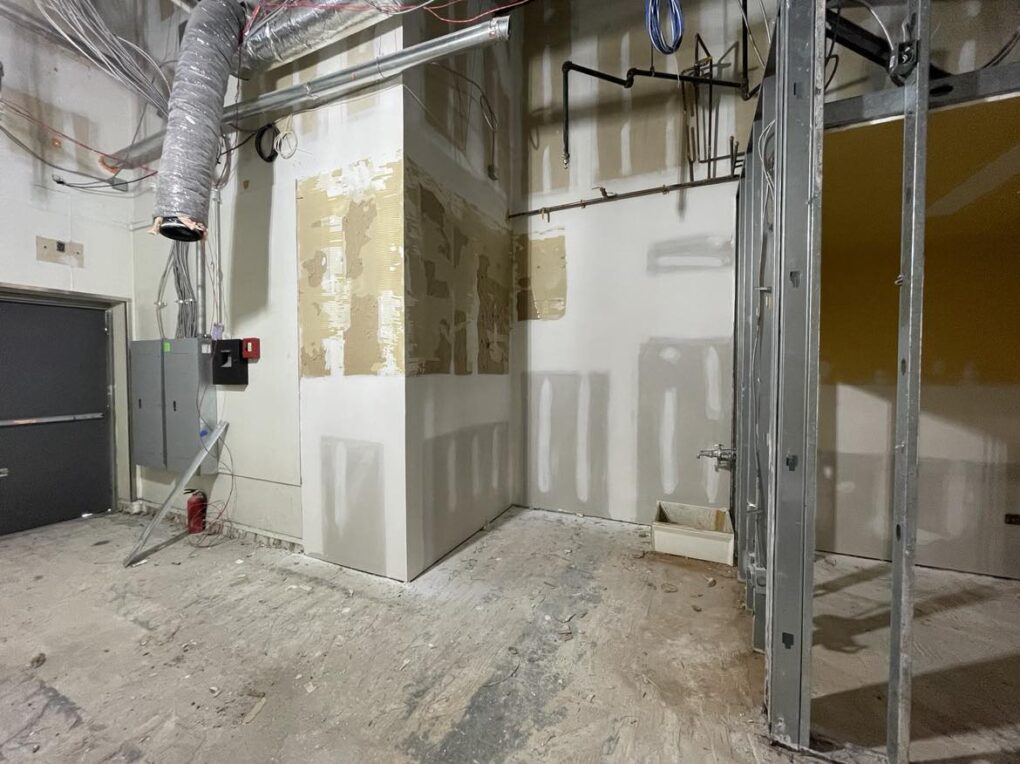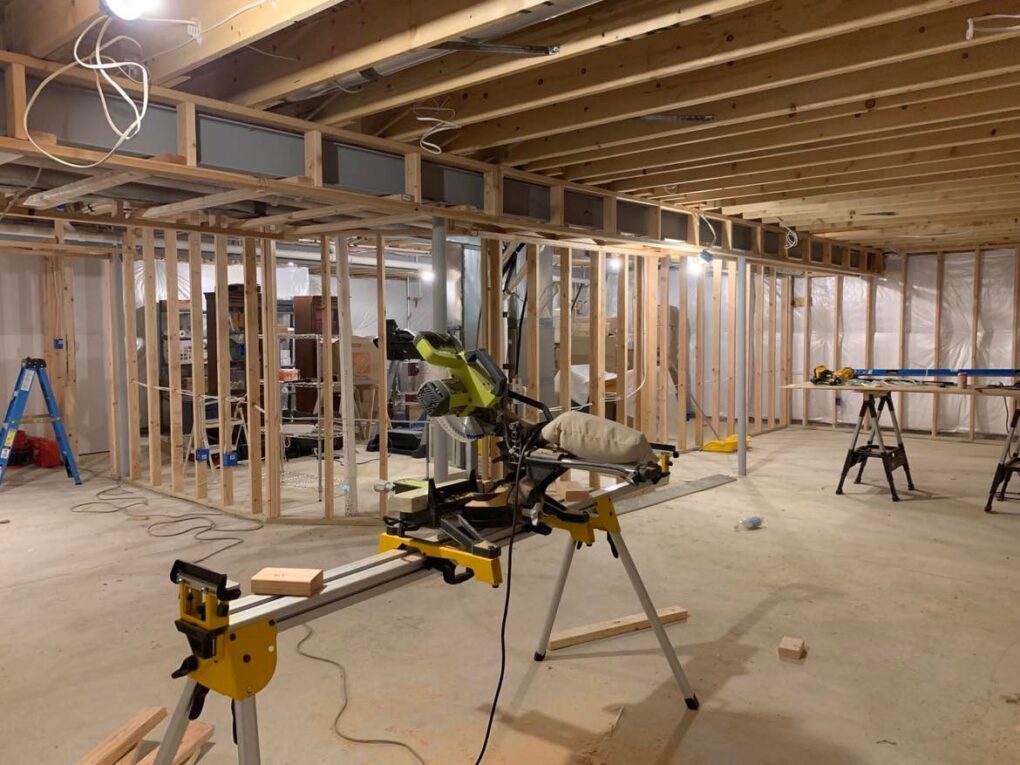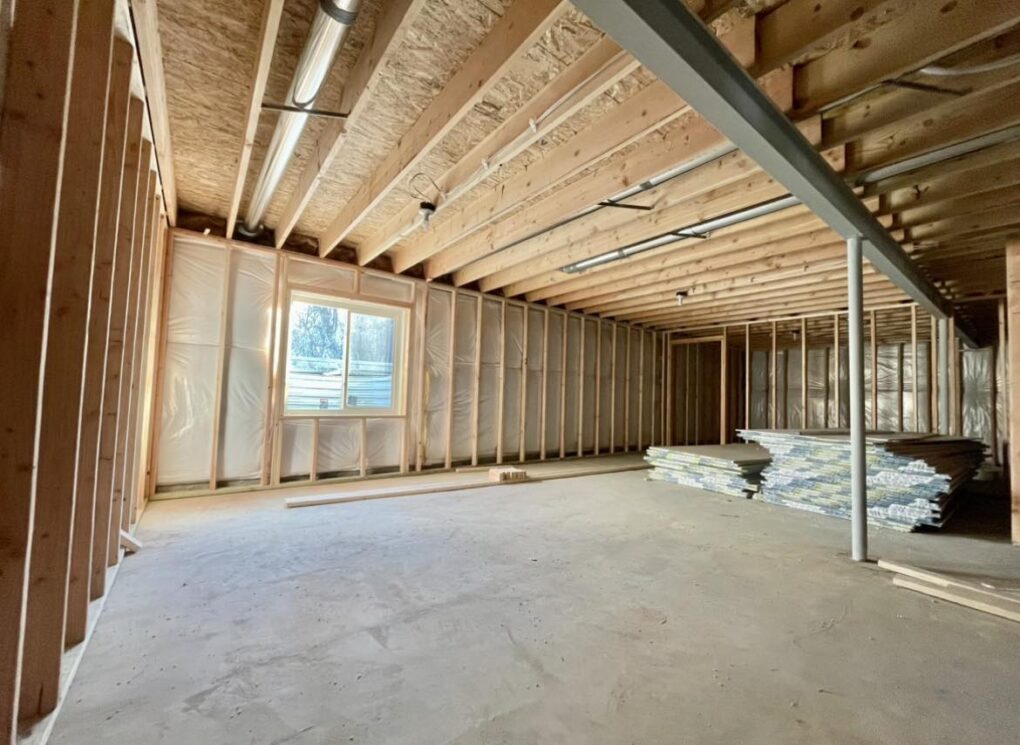When it comes to finishing a basement, framing is literally the building blocks for the entire project. There are two main options: Steel Studs Vs Wood. There are pros and cons to both.
Steel Studs

- Steel Studs are lighter, easier to transport down to the basement, and very straight compared with wood.
- Steel Studs also can be very useful in tight spots as they remain very straight and true even with a 1 5/8″ width.
- Steel studs require special fasteners, rubber gromets or specialty romex, and blocking for anything you may want mounted on your walls.
- Steel Studs are also resistent to water damage, termites, and fire resistent.
Wood Studs

- Wood Studs are typically stronger and heavier than metal studs.
- Using 2×4 studs limits the warping and twisting to a degree.
- Constructed like the rest of your home.
- Lower building cost.
The choice between metal and wood studs is a personal preference. We like using wood studs as it fits our “future proofing” for basement remodeling. With metal studs, you need to use blocking to hang items on walls. This requires a lot more planning and most of the time the layout of furniture and decor has not been solidified yet.
Framing Specifications
All the walls of a basement are non-load bearing; therefore you have some options when it comes to studs spacing. Standard choices are 16″ on center and 24″ on center. Even though the newly constructed walls of a basement are non-load bearing, we still like to frame each wall as if it is a load bearing wall, including it being 16″ on center. The two main reasons for that is:
- Drywall has more studs to attach two.
- Standard spacing when it comes to hanging tvs, pictures, hanging bars etc.

